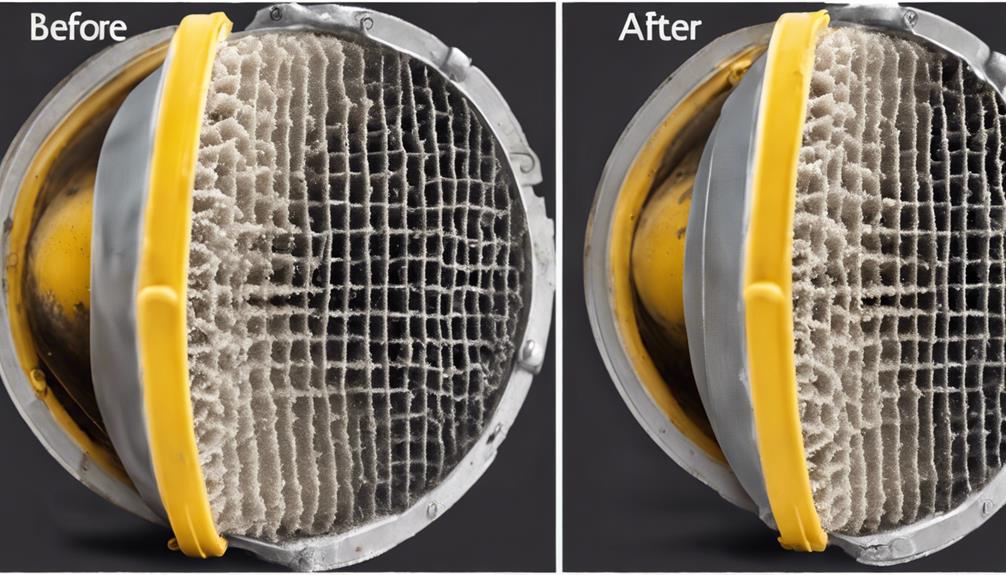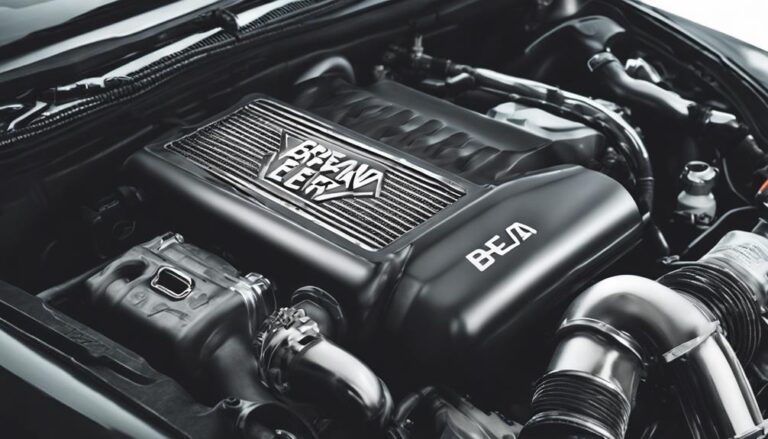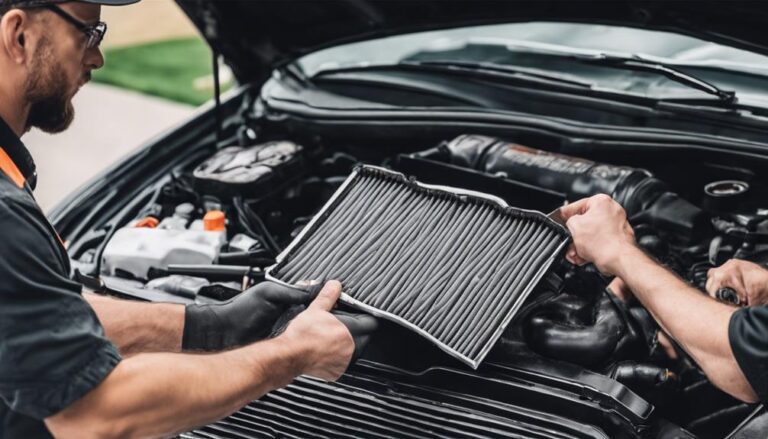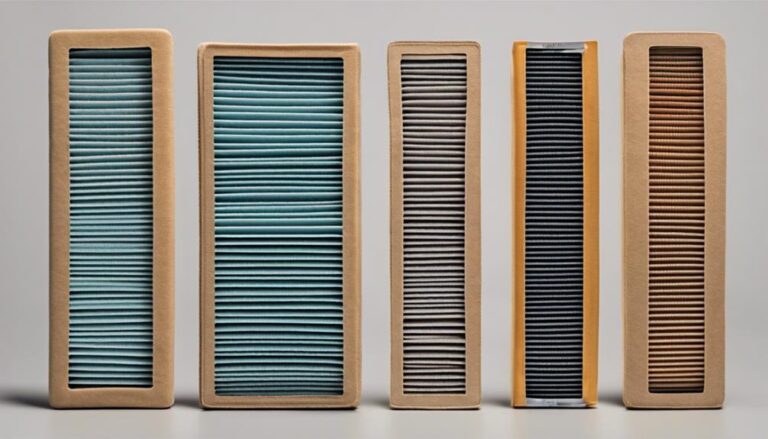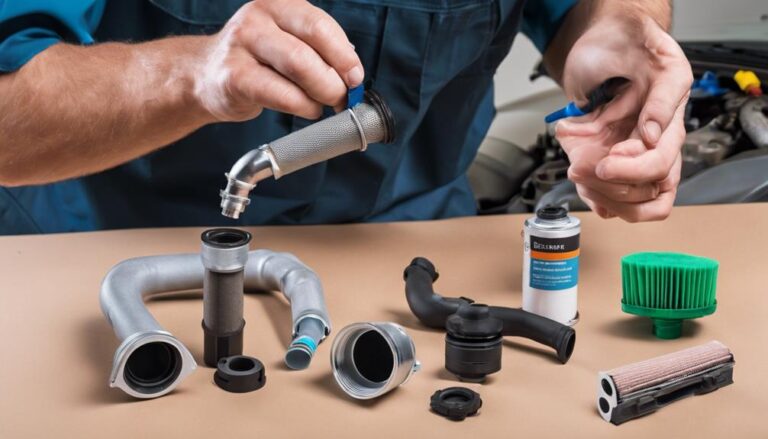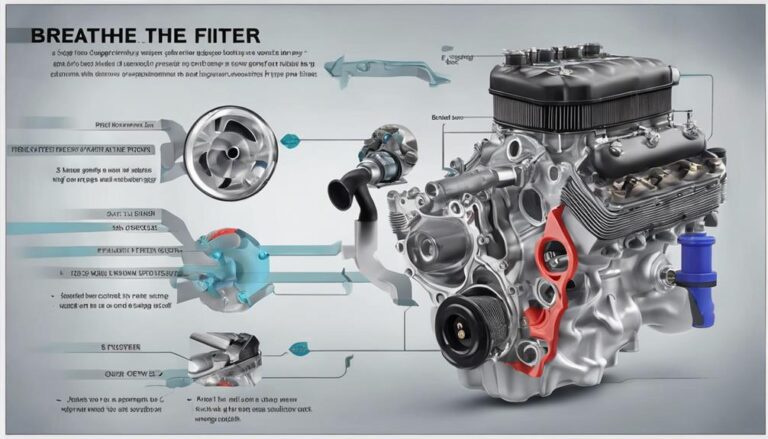3 Best Signs of Clogged Breather Filter
When your breather filter becomes clogged, it's like a traffic jam on an essential highway for your engine. You start noticing a drop in performance, perhaps struggling to accelerate as smoothly as before. But that's just the beginning.
Imagine an increase in oil consumption and a rough idle that hints at potential misfires. These are the three key signs that could signify a clogged breather filter – but what lies beyond these symptoms may surprise you.
Key Takeaways
- Decreased engine performance and rough idle signal a clogged breather filter.
- Increased oil consumption and misfires indicate filter issues affecting engine function.
- Reduced fuel efficiency and overheating risk highlight filter obstruction consequences.
- Addressing signs promptly prevents further damage to the engine system.
Decreased Engine Performance

If you notice a decrease in your vehicle's engine performance, it could be a sign of a clogged breather filter. This component is important for maintaining best engine function by ensuring proper airflow and preventing contaminants from entering the system. A clogged breather filter restricts airflow, leading to a rich air-fuel mixture that can negatively impact engine performance.
One key indicator of a clogged breather filter is reduced fuel efficiency. When the filter is blocked, the engine must work harder to draw in air, resulting in increased fuel consumption. This not only affects your wallet but also harms the environment due to higher emissions.
Additionally, a clogged breather filter can contribute to engine overheating. Restricted airflow disrupts the engine's cooling system, causing temperatures to rise beyond safe levels. Continuous overheating can lead to engine damage and ultimately costly repairs.
Regularly checking and replacing the breather filter is essential for maintaining best engine performance, improving fuel efficiency, and preventing engine overheating.
Increased Oil Consumption
A clogged breather filter not only impacts engine performance but can also lead to increased oil consumption in your vehicle. When the breather filter is clogged, it can cause a buildup of pressure within the engine, leading to various issues that affect oil circulation and consumption.
Here are some signs that indicate increased oil consumption due to a clogged breather filter:
- Oil Leaks: A clogged breather filter can cause oil to leak from different parts of the engine. The increased pressure can push oil past seals and gaskets, resulting in noticeable leaks under your vehicle.
- Engine Damage: The lack of proper ventilation due to a clogged breather filter can lead to engine damage. Insufficient airflow can cause parts of the engine to overheat, leading to long-term damage if not addressed promptly.
- Excessive Oil Burning: A clogged breather filter can cause oil to burn faster than usual. This results in the need for more frequent oil top-ups and can lead to potential engine problems.
- Reduced Lubrication: With increased oil consumption, there may be a lack of sufficient lubrication within the engine components, which can accelerate wear and tear.
Rough Idle and Misfires
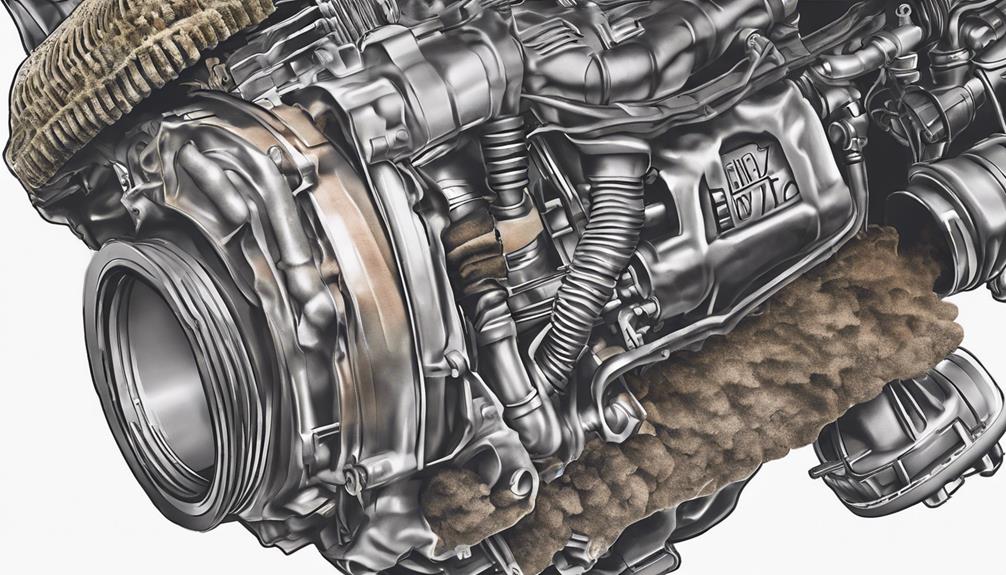
Experiencing rough idle and misfires in your vehicle can be indicative of potential issues stemming from a clogged breather filter. When the breather filter is obstructed, it can disrupt the air-to-fuel ratio in the engine, leading to unstable combustion processes. This can result in a rough idle, where the engine struggles to maintain a consistent speed, causing noticeable vibrations and fluctuations in RPMs.
Misfires occur when the air-fuel mixture fails to ignite properly in one or more cylinders. A clogged breather filter can contribute to this by disrupting the airflow and altering the combustion dynamics within the engine. This can manifest as jerking or hesitation during acceleration, reduced power output, and even engine stalling in severe cases.
If left unaddressed, these issues can not only affect the performance of your vehicle but also potentially lead to more serious mechanical problems. Hence, it's important to address any signs of rough idle and misfires promptly to prevent further damage and maintain optimal engine functionality.
Frequently Asked Questions
How Often Should the Breather Filter Be Replaced to Prevent Clogs?
To maintain peak breather filter longevity and effectiveness, you should replace it every 12,000-15,000 miles or as advised in your vehicle's manual. Regular breather filter maintenance guarantees it functions correctly, preventing clogs and promoting engine performance.
Can a Clogged Breather Filter Lead to Other Engine Issues Besides Those Mentioned in the Article?
When a clogged breather filter disrupts engine airflow, it can lead to reduced engine performance and potentially cause issues beyond what's mentioned. Follow maintenance tips to avoid these troubles and keep your engine running smoothly.
Are There Any Warning Signs or Symptoms That Indicate a Breather Filter Is Starting to Become Clogged?
When your breather filter nears clogging, you may notice symptoms like reduced engine performance, increased oil consumption, or a lit check engine light. Regular maintenance is key. DIY cleaning every 15,000-30,000 miles can prevent issues.
Can Using Low-Quality or Dirty Oil Contribute to a Clogged Breather Filter?
Using low-quality or dirty oil can indeed contribute to a clogged breather filter. Neglecting oil quality and maintenance impacts engine performance and efficiency. Guarantee proper oil changes and maintenance routines for peak engine health and longevity.
Are There Any DIY Methods for Cleaning or Unclogging a Breather Filter, or Is Replacement Always Necessary?
When it comes to cleaning methods for a clogged breather filter, DIY options like air blowing or solvent cleaning can help, but replacement is often best for peak engine performance. Regular maintenance can prevent clogs, ensuring longevity.
Conclusion
So there you have it – the top three signs of a clogged breather filter. If you notice decreased engine performance, increased oil consumption, or experience rough idle and misfires, it may be time to check and potentially replace your breather filter.
By staying vigilant and addressing these issues promptly, you can keep your engine running smoothly and efficiently. Remember, a well-maintained breather filter is essential for peak engine performance.

